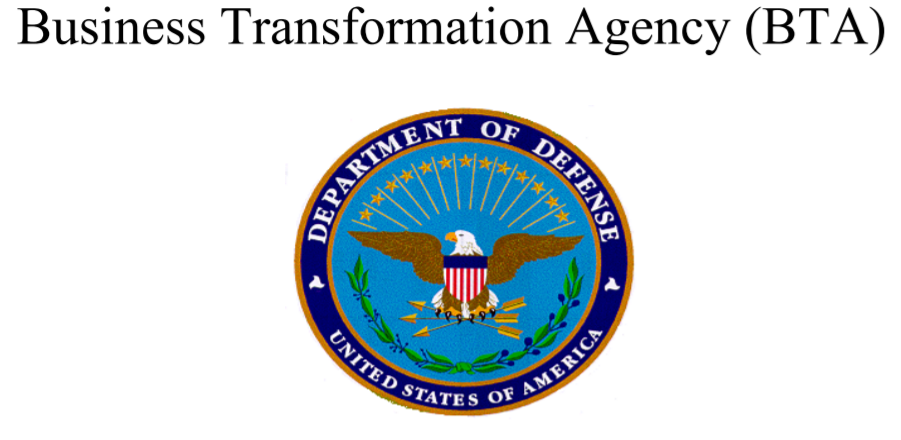Table of Contents
Defining Business Transformation
Business Transformation is a phrase used in management that refers to making fundamental changes in how a business operates or is conducted to help cope with the changing market environment. It is, to put it simply, the process of changing or transforming the systems, processes, people, and technology of the whole business or a particular unit of the business.
Business Transformation Agency
 Business Transformation Agency (BTA) was an organization of the United States Department of Defense and was responsible for guiding the Department’s operations to modernization. The BTA was active from 2005 to 2011.
Business Transformation Agency (BTA) was an organization of the United States Department of Defense and was responsible for guiding the Department’s operations to modernization. The BTA was active from 2005 to 2011.
This BTA’s main focus was on fostering business operations support for the soldiers, the position of accountability of the DoD to the people of the United States of America, improving the ERP system to ensure more efficient exchange of information between the various components of the Department of Defense and investment governance of the DoD Enterprise-level business systems.
Origin and End
The BTA was observed in October 2005 by Deputy Secretary of Defense Gordon R. England. The other funding executives of the BTA were Co-Directors Thomas Moly, Deputy Under Secretary of Defense for Financial Management, Paul Brinkley, Deputy Under Secretary of Defense for Business Transformation, David Fisher; Director of Transformation Planning and Performance, Radha Sekar, Director of Transformation Priorities and Requirements, Paul Ketrick, Director of Investment Management, Bob Love, Director of Warfighter Support, the Director of Information and Federation Management, David Scantling and Director of Agency Operations, Navy Captain Michael Murphy. In August 2010, the then Secretary of Defense, Robert Gates categories the BTA as redundant and a waste of resources, and it was closed in 2011.
Role of the BTA
 At the turn of the 20th century, the Department of Defense was configured to support a military that was dependent on large-scale weapons systems and for sustained predictable warfare. With the challenges faced by the Department of Defense in the 21st century, the BTA was established to help the modern business enterprise to adapt, and react effectively to the needs of its modern joint warfighters. The transformations undertaken were aimed to make the Department of Defense quicker and more effective in its responses and to address the issues affecting the troops deployed. All uniformed individuals in the Department of Defense were held accountable to confirm and execute the guidelines laid out by the BTA.
At the turn of the 20th century, the Department of Defense was configured to support a military that was dependent on large-scale weapons systems and for sustained predictable warfare. With the challenges faced by the Department of Defense in the 21st century, the BTA was established to help the modern business enterprise to adapt, and react effectively to the needs of its modern joint warfighters. The transformations undertaken were aimed to make the Department of Defense quicker and more effective in its responses and to address the issues affecting the troops deployed. All uniformed individuals in the Department of Defense were held accountable to confirm and execute the guidelines laid out by the BTA.
There were four main strategic objectives:
- Developing and providing support for the United States’ joint warfighting capability.
- Enabling fast access to information for strategic decisions by fostering the development of interoperable and efficient ERP systems.
- Reducing the cost of Defense Business operations
- Improving the financial stewardship of the people.
Organization
The BTA was structured into 8 directorates:
- Defense Business Systems Acquisition Executive (DBSAE) was in charge of the ERP systems of the 27 departments.
- Enterprise Integration (EI) whose duty was to ensure the adoption of DoD-wide information and process standards as defined in the BEA. IT sought to eliminate any hindering or cumbersome processes that inhibited the adoption of efficient ERP systems by the various components of the Department of Defense.
- Enterprise Planning and Investment (EP&I) that provided investment management for the DoD Enterprise-level business systems.
- Priorities and Requirements-Financial Management (P&R-FM) is the primary link between the Principal Staff Assistant in the Office of the Secretary of Defense and other DoD-level organizations.
- Priorities and Requirements-Human Resource Management (P&R-HRM) which was the link between the Office of the Secretary of Defense and all human resource management-related committees and issues.
- Priorities and Requirements-Supply Chain Management (P&R-SCM) which served as the primary link to the Principal Staff Assistants within the Office of the Secretary of Défense and other DoD-level organizations related to Supply Chain Management. They ensured that functional priorities such as Material Visibility, Common Supplier Engagement, Acquisition Visibility, and Real Property Accountability are seen in the BEA and the ETP as well as in the guidance for business system investment management.
- Warfighter Requirements (WR) was in charge of identifying and resolving the Department of Defense issues that were directly affecting the troops. It also acted as an advocate for soldiers within the BTA.
- Chief of Staff is the office that was responsible for offering operational support to the staff of BTA.
The BTA was intended to serve as a guiding hand for transformation by coordinating and integrating transformation activity at the Department of Defense enterprise level. As of 2020, the Defense Business Systems Management Committee has taken on most of the functions of the BTA.
Progress made by the BTA
 The BTA as an attempt to modernize the Department of Defense did undertake and achieve progress during its years of operation. Since its launch, the BTA has implemented an enterprise transition plan across the whole of the Défense Department covering all of its business operations, ranging from departmentwide to specific services and agencies. The initial plan of the BTA outlined the department’s investments and what it intends to achieve in terms of business operations for those investments. The document established a series of six-month milestones to enable improvement and create an environment of change. At the end of each six months, a status report is presented to Congress describing investments, goals met, future initiatives along with the goals that were not achieved, the problems, and the steps being taken to resolve problems.
The BTA as an attempt to modernize the Department of Defense did undertake and achieve progress during its years of operation. Since its launch, the BTA has implemented an enterprise transition plan across the whole of the Défense Department covering all of its business operations, ranging from departmentwide to specific services and agencies. The initial plan of the BTA outlined the department’s investments and what it intends to achieve in terms of business operations for those investments. The document established a series of six-month milestones to enable improvement and create an environment of change. At the end of each six months, a status report is presented to Congress describing investments, goals met, future initiatives along with the goals that were not achieved, the problems, and the steps being taken to resolve problems.
Reason for Ending
The BTA was ended on the grounds that it had become redundant. The Secretary of Defense, Robert Gates in 2010 stated the reason for the inactivation of the BTA as that it was an unnecessary categorised expense for the government as the BTA employed over 360 people and its annual expenditure was around $340 million and the responsibilities of the BTA had shrunk to mere daily acquisition programs which could be performed by any other organization. The role of the BTA was reassigned to the Defense Business Sytems Management Committee in 2020.

